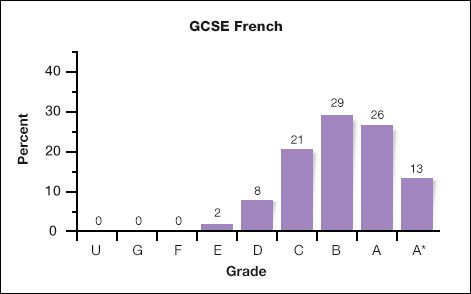The results are in… so what next?
By Sue Holt The GCSE and IGCSE results have been published so no doubt there have been celebrations, commiserations and, in some cases,...

Login | Support | Contact us
Mark S. Steed : Aug 21, 2018 1:18:00 PM
2 min read

This week sees thousands of students receiving their GCSE results.
Now is also the time when many anxious parents hope that their children have the best possible exam results that will allow them to progress to sixth form or college, and join the path they hope will take them to university and into successful and fulfilled employment.
Amid the anxiety and relief, the questions nagging at the back of many parents’ minds on results’ day are ‘Did my child get the best possible grades that he could have?’ and, given the amount we invest in our children’s education, ‘Has the school done a good job?’
As parents and teachers, we know that not all children are the same.
Some have a greater aptitude for academic studies than others; for some work comes easy - for others it is hard; some make a huge effort – others are lazy or disengaged.
For this reason, academic success cannot simply be measured by the final grades: a gifted student who achieves 10 A grades (or new grades 8 and 9) may have under-performed, whereas a less gifted student may well have fulfilled her potential and achieved 5 Bs and 3 Cs (Grades 4, 5 and 6).
The true measure of performance in any examination is not raw results; rather we should judge our children’s performance in relation to their ability. The question is how do we decide whether or not a student has fulfilled his or her potential?
One important way of evaluating this is by looking at a measure of ‘value-added’. Cambridge Insight (formerly CEM) has been researching student performance for over thirty years. Over this time, millions of students have been tested at the start of their secondary schooling (aged 11) and their performances monitored at GCSE (aged 16).
These data allow Cambridge Insight to define with a high degree of accuracy what grade a student of a given baseline score is most likely to get in their GCSE in a given subject.
This is not to say that all students of the same ability get the same results: the Cambridge Insight data set is able to outline the percentage chance of a student of a given ability will achieve. For example in Figure 1 (below), 2% of students with a given baseline score might have a got an ‘E’ in French GCSE, 8% got a ‘D’, 21% got a ‘C’, 29% got a ‘B’, 26% got an ‘A’, and 13% got an ‘A*’.

Figure 1 Chances Graph for French GCSE
In this case, the ‘most likely grade’ is a ‘B’. Thus if a student of this ability gets an ‘A’ or an ‘A*’, it might be said that he or she has exceeded expectations; whereas if the student gets below a B grade, he or she has fallen short of expectations.
Value-added is also a useful measure of evaluating schools, departments and even teachers. A school, department, or a teacher who consistently has students who are exceeding expectations is adding value and is doing a great job; conversely, a school, department or teacher whose students consistently fall short of expectations indicates the urgent need for improvement.
Savvy parents looking for a secondary school would be well advised to ask for the schools’ value-added scores, rather than just their raw GCSE results – they can be far more telling.
At JESS, we use Cambridge Insight baseline data to set aspirational targets for students (and staff). These targets are published to parents and we report on the student’s performance in a given subject against these targets. We believe that this process is the main reason for the improvement in GCSE outcomes that we have seen.
Results days are always anxious times for all concerned. It usually is a time for celebration, as well as a time for relief. When your child brings you the result slip, don’t forget that their greatest achievement is sometimes the hard-fought ‘C’ grade or grade 4 in the subject that they find most difficult.
Cambridge Insight’s value-added feedback is available for schools on results day. Upload your GCSE and A-Level results to get your value-added feedback on the same day.

By Sue Holt The GCSE and IGCSE results have been published so no doubt there have been celebrations, commiserations and, in some cases,...

We all know that academic progress is an individual thing. Making progress relies on a whole range of influencing factors and students make progress...

“Without continual growth and progress, such words as improvement, achievement, and success have no meaning.” - Benjamin Franklin.